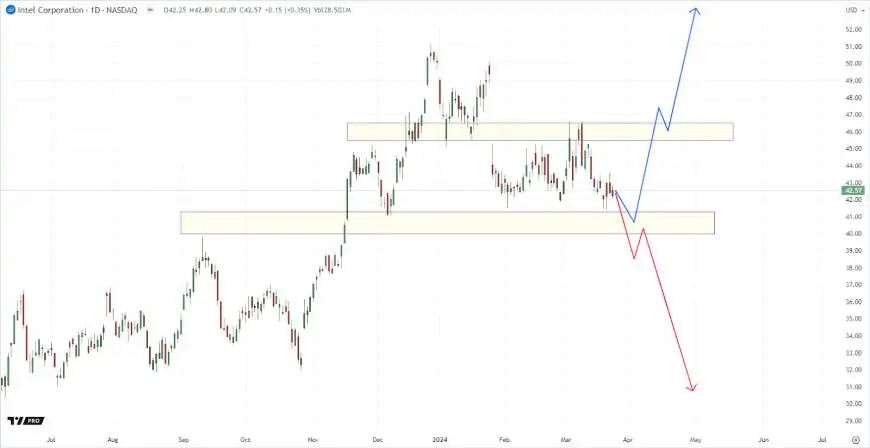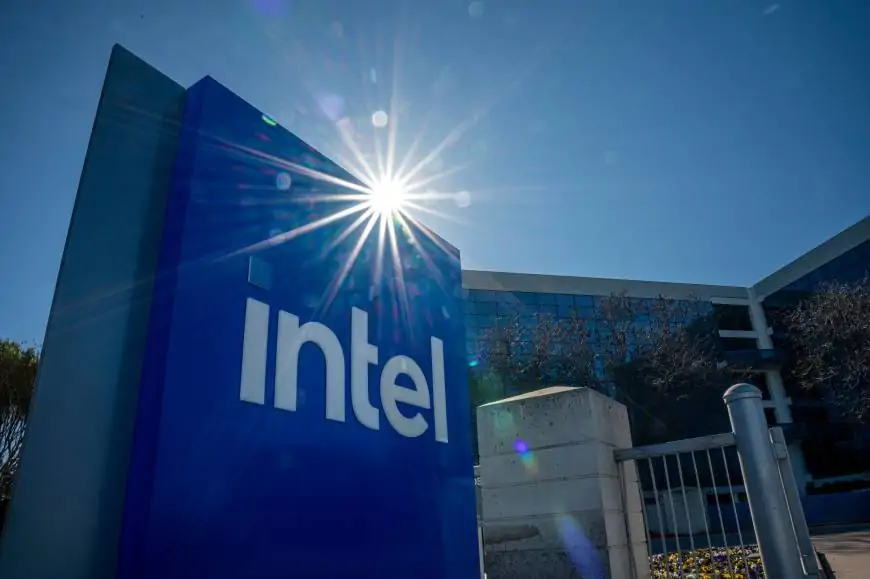The microprocessor manufacturing industry holds a pivotal role in both the global economy and technological development. Intel (NASDAQ:INTC), a major player in this field, is strategically aiming to shift the majority of its production operations to the United States. Given the current state of technology and the economic context, it is important to understand the challenges and advantages associated with this move.
Access to highly qualified personnel in the United States offers a large pool of talented engineers and specialists in high technology, a critical factor in producing intricate and high-quality products such as microprocessors. In addition, intellectual property protection aids in safeguarding production. Strict U.S. intellectual property laws provide better protection for technological innovation, which is essential for a company seeking to maintain its competitive advantages.
Having chip production directly within the country allows Intel to control its supply chains better, mitigating risks linked to political instability or customs issues in other nations.
The U.S. Federal Government often provides incentives to foster the domestic high-tech industry, including subsidies and tax incentives for corporations investing in manufacturing within the United States. In addition, with regard to defense contracts with Intel, it's been mentioned that the subsidies from the US Department of Commerce cover only the company's expenses in the commercial sector, excluding funding for defense orders. Negotiations with relevant customers are underway, but Intel's CEO, for obvious reasons, isn't ready to divulge specifics.
Thus, with Intel's aim to establish 20% of the world's advanced chip production in the United States by 2030, the country's authorities are making a serious bet on the corporation. According to the preliminary agreement, Intel stands to receive $8.5 billion in direct non-repayable subsidies, $11 billion in preferential loans, and a 25% tax deduction for investments up to $100 billion.
Among the disadvantages, one significant obstacle to production in the United States is high transaction costs, especially compared to some Asian countries where labor and production costs can be notably lower. Chip manufacturers from countries such as China and South Korea benefit from substantial government subsidies, enabling them to actively compete globally, often offering lower prices.
Microprocessor manufacturing technologies are evolving swiftly, and maintaining production facilities up to the latest standards requires significant investments. This can be especially challenging given the high production costs in the United States. Despite the desire to create reliable supply chains within the country, U.S. production still relies on the global market for raw materials and components. Issues such as trade conflicts can seriously affect production operations.
Nevertheless, such plans are likely to be positively received by investors. With prices hovering around the global level of $40, which now serves as a support, there's a good chance that bullish sentiment will safeguard it and propel the price upward. A breakout above the $46 resistance level will be anticipated in case of a successful run.
The fact that these levels flip roles between support and resistance can be used to determine the range of a market, trade reversals, bounces, or breakouts.

Intel, while remaining a leader in microprocessor production, faces a number of serious challenges and advantages in organizing production in the United States. Highly skilled labor, intellectual property protection, and government support are significant advantages, while high costs, fierce international competition, and the need for continuous investment in modern technology pose constraints. Companies like Intel must carefully evaluate and adapt to these factors to ensure their sustainable growth and successful operation in the global economy.





![[WATCH VIDEO] Sophie Rain and sister Sierra Rain as Black Spiderman goes viral [WATCH VIDEO] Sophie Rain and sister Sierra Rain as Black Spiderman goes viral](https://www.sociallykeeda.com/uploads/images/202403/image_140x98_660976c59cce0.webp)





![[FULL WATCH VIDEO] Will Levis And Gia Duddy Leak Video Viral On Social Media [FULL WATCH VIDEO] Will Levis And Gia Duddy Leak Video Viral On Social Media](https://www.sociallykeeda.com/uploads/images/202405/image_140x98_6651e7ae8038d.webp)


